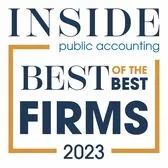On November 19, 2015, the IRS issued Revenue Procedure 2015-56 to simplify the otherwise complex implementation of the new Tangible Property Regulations. This Revenue Procedure provides taxpayers operating a retail business (or restaurant) with a “safe harbor” rule for immediately expensing the majority of remodel or refresh costs paid or incurred. This safe harbor rule is effective for tax years beginning on or after January 1, 2014.
Restaurant and retail operations are often remodeled or refreshed to enhance the physical appearance of a particular establishment and to maintain an attractive environment for the customer. Generally, these costs are capitalized and depreciated over time – up to 39 years for certain capital improvements (regardless of the lease term on the space), such as walls and other immovable improvements.
Under the new safe harbor procedure, restaurant and retail owners or lessees can now generally deduct a fixed percentage (75%) of qualified remodel or refresh costs and capitalize and depreciate the remaining percentage (25%). This application of this safe harbor also minimizes the need for additional detailed analysis in the event taxpayers are uncertain whether a particular expenditure is a deductible repair under the Tangible Property Regulations, or whether it should be capitalized.
Rev. Proc. 2015-56 defines “Qualified Taxpayers”, “Qualified Buildings”, and “Qualified Remodel or Refresh Projects”:
Qualified Taxpayers
A Qualified Taxpayer must have an applicable financial statement, which is a financial statement which is either filed with the SEC, audited by an independent certified public accountant, or required to be provided to the federal or state government (or agency). While many taxpayers do not have audited financial statements, these new rules may encourage taxpayers to secure an audit for the year of remodel-refresh.
A qualified taxpayer must be in the trade or business of selling merchandise to customers at retail (excluding automotive dealers, other motor vehicle dealers, gas stations, manufactured home dealers, and non-store retailers), preparing and selling meals, snacks, or beverages to customer order for immediate on-premises or off-premises consumption (excluding hotels/motels, civic or social organizations, amusement parks, theaters, casinos, country clubs, or similar recreation facilities, and special food services such as food service contractors, caterers, and mobile food services), or is a taxpayer that owns or leases a qualified building to a taxpayer that is either a retailer or restaurateur.
Qualified Building
A Qualified Building means each building unit of property used by a taxpayer primarily for selling merchandise to customers at retail or for preparing and selling food or beverages to customer order for immediate on-premises or off-premises consumption.
Qualified Remodel or Refresh Project
In connection with a Remodel-Refresh Project, eligible expenditures are amounts paid by a taxpayer for remodel, refresh, repair, maintenance, or similar work performed on a Qualified Building (refer to Rev. Proc. 2015-56 for a listing of typical remodel-refresh expenditures that will qualify, as well as examples of activities that would not qualify).
A Remodel-Refresh Project means a planned undertaking by a qualified taxpayer on 20% or less of a qualified building to alter its physical appearance and/or layout for one or more of the following purposes:
- maintain a contemporary and attractive appearance;
- more efficiently locate retail or restaurant functions and products;
- conform to current retail or restaurant building standards and practices;
- standardize the consumer experience if a taxpayer operates more than one qualified building;
- offer the most relevant and popular goods within the industry; or
- address changes in demographics by changing product or service offerings and their presentations.
A Remodel-Refresh Project does not include a planned undertaking solely to repaint or to clean the interior or exterior of an existing building, adapting more than 20% of the building to a new or different use, nor does it include the costs associated with the initial build-out of retail or restaurant space. Leasehold improvement allowances given by the lessor to the lessee are also generally excluded from these safe harbor rules. Other non-eligible expenditures include damage restoration, ameliorating a material defect, as well as improvements to land.
Change of Accounting Method
Rev. Proc. 2015-56 also provides guidance for qualifying taxpayers to obtain automatic consent to change to the safe harbor method described in the revenue procedure.
Additional Considerations and/or Limitations
It should be noted that a taxpayer changing to the safe harbor method will not be permitted to claim a partial disposition loss for any portion of an original qualified building or any portion of any improvement or addition to an original qualified building. Therefore, adopting the new safe-harbor provisions must be weighed against the delayed write-off (through depreciation) of the prior build-out costs. To the extent that the taxpayer has made a partial disposition election for any prior year, the taxpayer must revoke the election by either amending its tax returns or filing a Form 3115, Application for Change in Accounting Method.
Additionally, the taxpayer must make a General Asset Account (GAA) election to include any assets that comprise a qualified building and are required to be included in the GAA (refer to Rev. Proc. 2015-56 for further detail). In general, GAAs group together assets that share common characteristics and are depreciated as if they collectively represent one asset.
Due to the significant cash-flow benefit of writing off 75% of the refresh costs, qualifying taxpayers should consider their eligibility for, including the benefits and limitations of Rev. Proc. 2015, as this safe harbor can produce immediate tax savings while minimizing administrative burdens created by the tangible Property Regulations.
For more information, please contact Blake Christian at 435-200-9262 or blakec@hcvt.com.


